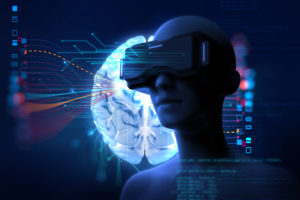A Systematic Review of Virtual Reality in Education
 Virtual reality has existed in the realm of education for over half a century. However, its widespread adoption is still yet to occur. This is a result of a myriad of limitations to both the technologies themselves, and the costs and logistics required to deploy them. In order to gain a better understanding of what these issues are, and what it is that educators hope to gain by using these technologies in the first place, we have performed both a systematic review of the use of virtual reality in education, as well as two distinct thematic analyses. The first analysis investigated the applications and reported motivations provided by educators in academic literature for developing virtual reality educational systems, while the second investigated the reported problems associated with doing so. These analyses indicate that the majority of researchers use virtual reality to increase the intrinsic motivation of students, and refer to a narrow range of factors such as constructivist pedagogy, collaboration, and gamification in the design of their experiences. Similarly, a small number of educational areas account for the vast majority of educational virtual reality implementations identified in our analyses. Next, we introduced and compared a multitude of recent virtual reality technologies, discussing their potential to overcome several of the problems identified in our analyses, including cost, user experience and interactivity. However, these technologies are not without their own issues, thus we conclude this paper by providing several novel techniques to potentially address them, as well as potential directions for future researchers wishing to apply these emerging technologies to education.
Virtual reality has existed in the realm of education for over half a century. However, its widespread adoption is still yet to occur. This is a result of a myriad of limitations to both the technologies themselves, and the costs and logistics required to deploy them. In order to gain a better understanding of what these issues are, and what it is that educators hope to gain by using these technologies in the first place, we have performed both a systematic review of the use of virtual reality in education, as well as two distinct thematic analyses. The first analysis investigated the applications and reported motivations provided by educators in academic literature for developing virtual reality educational systems, while the second investigated the reported problems associated with doing so. These analyses indicate that the majority of researchers use virtual reality to increase the intrinsic motivation of students, and refer to a narrow range of factors such as constructivist pedagogy, collaboration, and gamification in the design of their experiences. Similarly, a small number of educational areas account for the vast majority of educational virtual reality implementations identified in our analyses. Next, we introduced and compared a multitude of recent virtual reality technologies, discussing their potential to overcome several of the problems identified in our analyses, including cost, user experience and interactivity. However, these technologies are not without their own issues, thus we conclude this paper by providing several novel techniques to potentially address them, as well as potential directions for future researchers wishing to apply these emerging technologies to education.
Themes in Science and Technology Education Via ERIC







